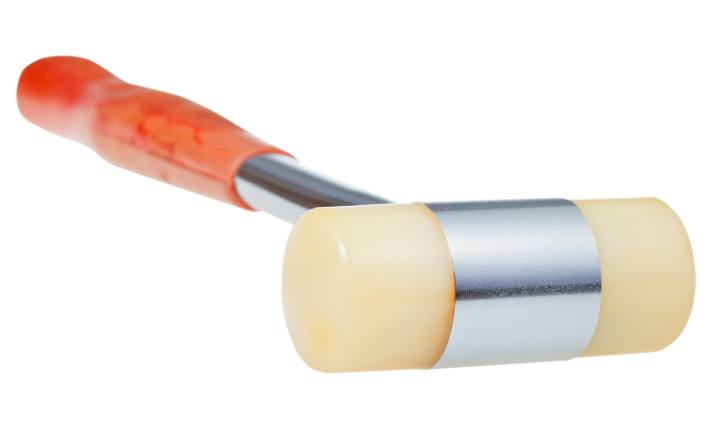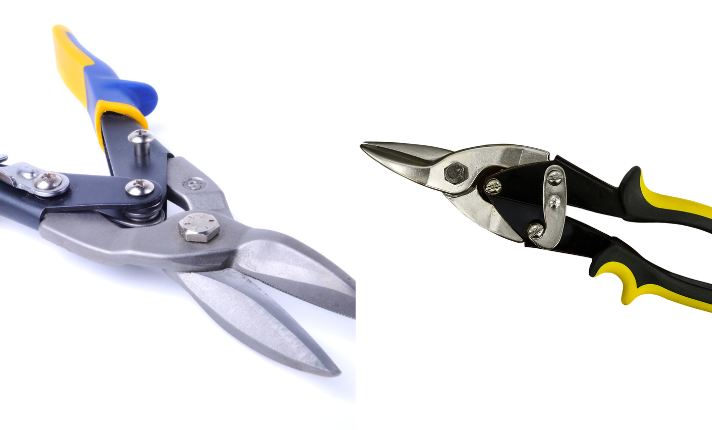Proper roofing tools are essential for safety and quality in any roofing project, whether you’re a homeowner or a professional. This guide outlines critical tools for both basic and specialized tasks, emphasizing the importance of safety.
1. Ladders
When working with ladders, it’s crucial to maintain a secure grip by wearing clean, non-slip footwear, and to avoid overreaching to prevent falls. Always set up your ladder away from any electrical hazards or obstructions. Inspect ladders thoroughly before each use and refrain from using damaged or worn ladders. Have a coworker assist in stabilizing tall ladders when needed.
2. Fall Protection Equipment
In addition to checking your fall protection equipment, ensure that you’re properly trained in its use and that you’re familiar with emergency procedures. Regularly inspect and maintain anchor points to guarantee their safety and reliability. Consult the manufacturer’s guidelines to determine when equipment should be taken out of service for repairs or replacement. Attend refresher courses periodically to reinforce proper equipment inspection and usage techniques.
3. Crowbar
Use a crowbar with the correct length for your task to maximize leverage and minimize strain on your body. When using the flat end, position it as close to the material you’re prying as possible for better control. Select a crowbar made of durable and corrosion-resistant material to withstand heavy usage. Store the crowbar properly when not in use to prevent damage.
4. Flat Pry Bar
For delicate materials, consider using a wooden shim between the pry bar and the material to avoid damaging it. Store your pry bar in a dry place to prevent rust and maintain its durability. Wipe down the pry bar after each use to remove any dirt or residue. Do not use a damaged or excessively worn pry bar that may break or slip.
5. Roofing Shovel
When removing old roofing materials with a shovel, take care not to dig into the underlying roof structure. Use a tarp or bin nearby to collect debris and prevent it from scattering. Wear protective gloves when shoveling to avoid hand blisters. Take regular breaks when shoveling to avoid overexertion injuries.

6. Claw Hammer
When driving nails with a claw hammer, hold the nail with your non-dominant hand to guide it accurately. Invest in a quality hammer with a comfortably cushioned grip to reduce strain on your arm. Check the claw for chips or damage that could cause material to split. Keep the hammer head seated firmly to prevent fly-offs.
7. Rubber Mallet
Consider using a rubber mallet with interchangeable heads to adapt to different tasks. Always wear appropriate eye protection when using a mallet to prevent eye injury from debris. Replace worn mallet heads to maintain impact force and absorb vibrations. Do not strike metal surfaces to prevent damaging the mallet head.

8. Roofers Hatchet
Keep the hatchet’s edge sharp by using a honing stone or file, and ensure the hammer face is clean and free of any buildup. Periodically check and tighten the hatchet’s handle to avoid accidents. Store in a protective sheath when not in use to prevent dulling of the blade edge. Ensure your hands are clear of the strike zone when swinging.
9. Power Drill/Driver
Before drilling, double-check the depth setting on your drill to avoid penetrating the roofing material too deeply. Invest in high-quality drill bits designed for roofing to ensure clean and efficient drilling. Unplug the drill when changing bits or making adjustments. Maintain good balance and footing when operating an elevated drill.
10. Roofing Nailer
Use a pneumatic roofing nailer for faster and more consistent results, and always disconnect the air supply when not in use for safety. Keep the nailer’s magazine clean and free of debris to prevent jams. Oil and clean the nailer regularly as specified by the manufacturer. Always wear eye protection when using a roofing nailer.
11. Jigsaw
When making curved cuts with a jigsaw, start by drilling a pilot hole to provide greater control and precision. Adjust the jigsaw’s speed and orbital settings to match the material you’re cutting. Keep hands away from the saw blade and maintain firm control of the jigsaw. Let the blade work without forcing the cut.
12. Utility Knife
Keep a dedicated, sharp utility knife for roofing projects to avoid dull blades and inefficient cuts. Properly dispose of used blades in a sharps container to prevent accidents. Close the knife when passing it or climbing a ladder. Store the utility knife in a secure holster when not in use.
13. Snips
Store snips in a way that protects the blade edges to prolong their sharpness. Lubricate pivot points to maintain smooth cutting action and reduce wear on the tool. Keep hands away from the blades when closing the snips. Avoid dropping from heights which could damage the precision blades.

14. Hacksaw
Always use the appropriate blade for the material you’re cutting with a hacksaw, and maintain a straight and even cutting motion for best results. Clear debris from the cutting path to avoid blade binding. Secure the material being cut to prevent shifting and binding. Let the blade do the work without excessive pressure.
15. Tin Snips
Wear safety goggles when cutting with tin snips to protect your eyes from flying metal fragments. Keep the blades sharp to reduce effort and ensure clean cuts. Cut away from your body and position material securely. Keep hands clear of the closing blades during the cutting motion.
16. Framing Square
When measuring and marking with a framing square, always use a sharp pencil or scribe to ensure precise lines. Clean and protect the framing square from rust to maintain accuracy. Check the square for true angles periodically to ensure it wasn’t damaged. Reference the square frequently when cutting to maintain accuracy.
17. Chalk Line Box
Ensure the chalk line is tightly wound and evenly distributed within the box to prevent tangles and ensure consistent markings. When snapping lines, use a firm, consistent pull for straight and accurate lines. Store chalk in a dry, sealed container when not in use to prevent caking. Check the string for fraying and replace if needed.
18.Wheelbarrow
Periodically grease the wheelbarrow’s axles to maintain smooth wheel rotation and make transportation easier. When loading the wheelbarrow, distribute weight evenly to prevent tipping. Do not overload the wheelbarrow beyond its weight capacity. Wash the wheelbarrow after use to prevent material buildup.
To succeed in roofing projects, invest in quality tools and prioritize safety. Use the right tools for the job, whether it’s minor repairs or full installations. Don’t hesitate to seek professional help if needed. Preparedness and safety are key to roofing success.
Contact us to get your annual roof inspection scheduled today: https://www.allen-exterior.com
